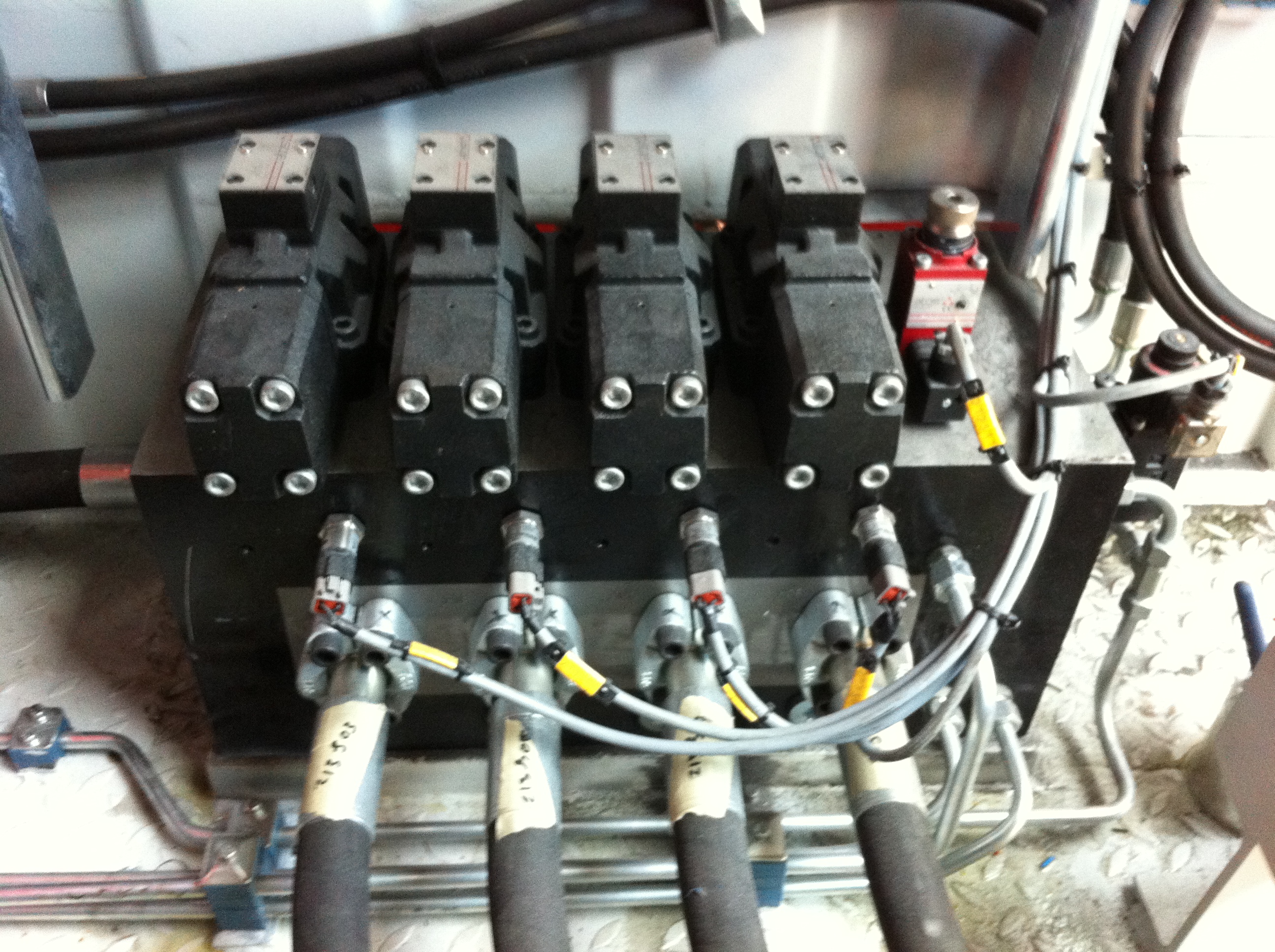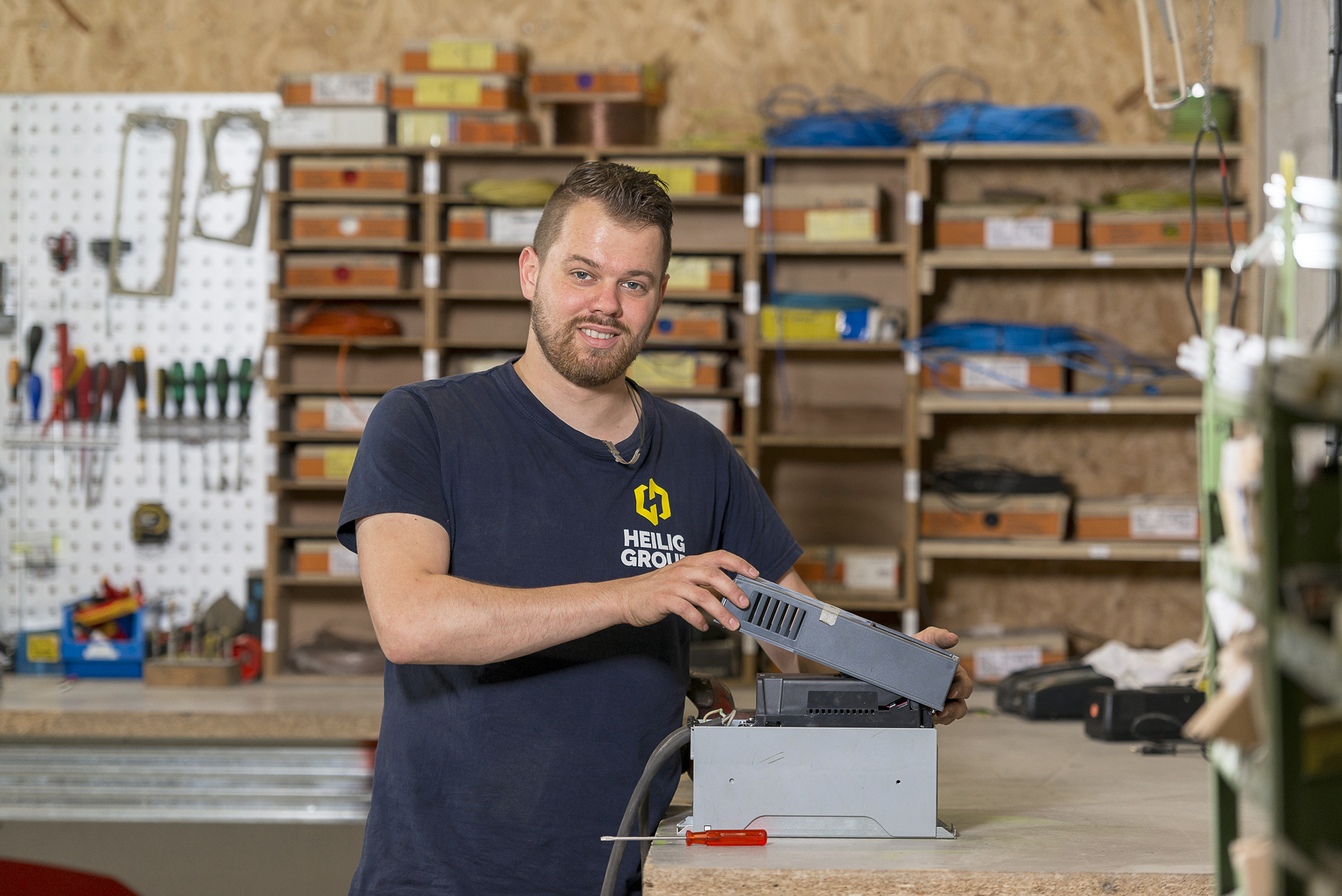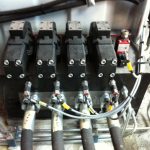WHAT IS LOW-VOLTAGE?
Low-voltage is often seen as a type of voltage used in machines or lighting systems that use less than 230V, for example 24 or 12V. This is incorrect, and it confuses a lot of people. Therefore, we shall clarify this matter.
Low-voltage is a voltage up to 1,000 volt alternating current and 1,500 volt direct current. Mains voltage (230/400) is low-voltage used in homes and businesses. In The Netherlands low-voltage installations must comply with the provisions of the Low Voltage Directive.
FROM HIGH-VOLTAGE TO LOW-VOLTAGE
After transmission and distribution via the high-voltage grid, a transformer converts the supplied 3 phase power on the designated location. For industrial users, glasshouse horticulture, large buildings and flats the voltage transforms from 10 kV to 400 volt. In urban districts distribution cabinets convert 3 phase power of 400V to single phase power of 230V.
The incoming connection in the meter cabinet has a main fuse which determines the maximal current. If you have a 3 phase connection there are three individually connected fuses. The main fuse is secured by a seal which you are not allowed to break.
The main electrical panel is connected to the fuse board, in which each electrical circuit is one power group. These groups are normally secured with 16 Ampère sockets or, in older installations, with fuses (melt-down protection). If the circuit is disabled by a device, you just need to reset the device. However, a fuse blows when the current supplied exceeds the fixed value for an excessive time or when a sudden short circuit takes place. To re-start the circuit a new fuse must be installed.
Addition of an extra group(s) is dependent on the maximum possible current that the main fuse can supply.
WHAT IS THE AVAILABLE VOLTAGE LEVEL IN THE METER CABINET?
The standard voltage in the meter cabinet of your home is 230V. Depending on the incoming phases you can connect electrical appliances of 230 to 400V. Large companies sometimes use other voltage levels, because they have their own transformer stations. Companies and industrial sites are usually supplied with an infrastructure which allows high capacities.
The availability of the capacity does not only depend on available voltage levels, but on the available or required connected load, referred to as Watt (W). The formula is: Current (Ampère) x Voltage (Volt) = Power (Watt).
The connected load of your main electrical panel determines the available capacity for the use of electrical appliances and machines.
WHAT IS THE AVAILABLE CAPACITY IN THE METER CABINET?
There is a maximum wattage that can be connected to the mains and simultaneous use of electrical appliances. The maximum power consumption (in watts) is listed on each appliance. The sum of the connected load of all appliances will eventually determine the required connecting capacity from the main electrical panel.
Households
Since 2011 the 3 phase connection of 3 x 25 A has been the standard for new connections, which is sufficient for small office buildings and houses which do not use heavy equipment. This allows for a connected load of 17,250 watt (3 x 25 A x 230 V), which is similar to 17.25 kW.
Businesses
In general, locations for large companies already have high-capacity electrical facilities, which are required for their buildings and heavy equipment. Here 3 phase connection can be 3 x 80 A or even higher. The formula of the total capacity (connected load) for simultaneous use of all appliances is: Current (Ampère) x Voltage (Volt) = Power (Watt). A connection of 80 Ampère is 80 A x 230 V= 18,400 Watt. So in a 3 x 80 A connection is even 55,200 Watt, which is similar to 55.2 kW.
Groups
The incoming connections determine the maximum connected load and contain main fuses. Then the connections are distributed over groups. These groups are normally secured with a 16 Ampère protection device for low-voltage installations. Depending on the number of phases and main fuses, one group of 230V and a 16 A protection device allows a maximum capacity of 230 V x 16 A = 3,680 W or 3.68 kW to be connected.
The lay-out of your electrical installation is complex. Beemster is specialized in creating customized solutions for your electrical installation. Please contact us for more information.
THREE PHASED CONNECTIONS FOR DEVICES THAT CONSUME A LOT OF ELECTRICITY AND REQUIRE HIGHER VOLTAGE
Three phased connections power current, also referred to as AC current, is used in devices that require a lot of power and higher voltage than the standard 230V for these devices. Not one, but all three phases are connected. Each phase has a voltage level of 230 (phase current) with respect to zero. The total difference of voltage between the phases is 400V (line current). By connecting all 3 phases you obtain a higher voltage of 400.
Three phased connections require thicker cables. Thicker cables disperse the heat arising from the higher voltages and have less resistance. For heavy motors that require Three phased connections power the phase sequence is important for the correct direction of rotation of the motor.
Beemster installs high-voltage power lines. For more information, please consult our three phased connections page or contact us without any obligation.
Feel free to contact us directly:
Sales team
E: info@beemster.nl
T: +31 (0)72 571 1282
Know what you want? Fill out our contact form:


 NL
NL




